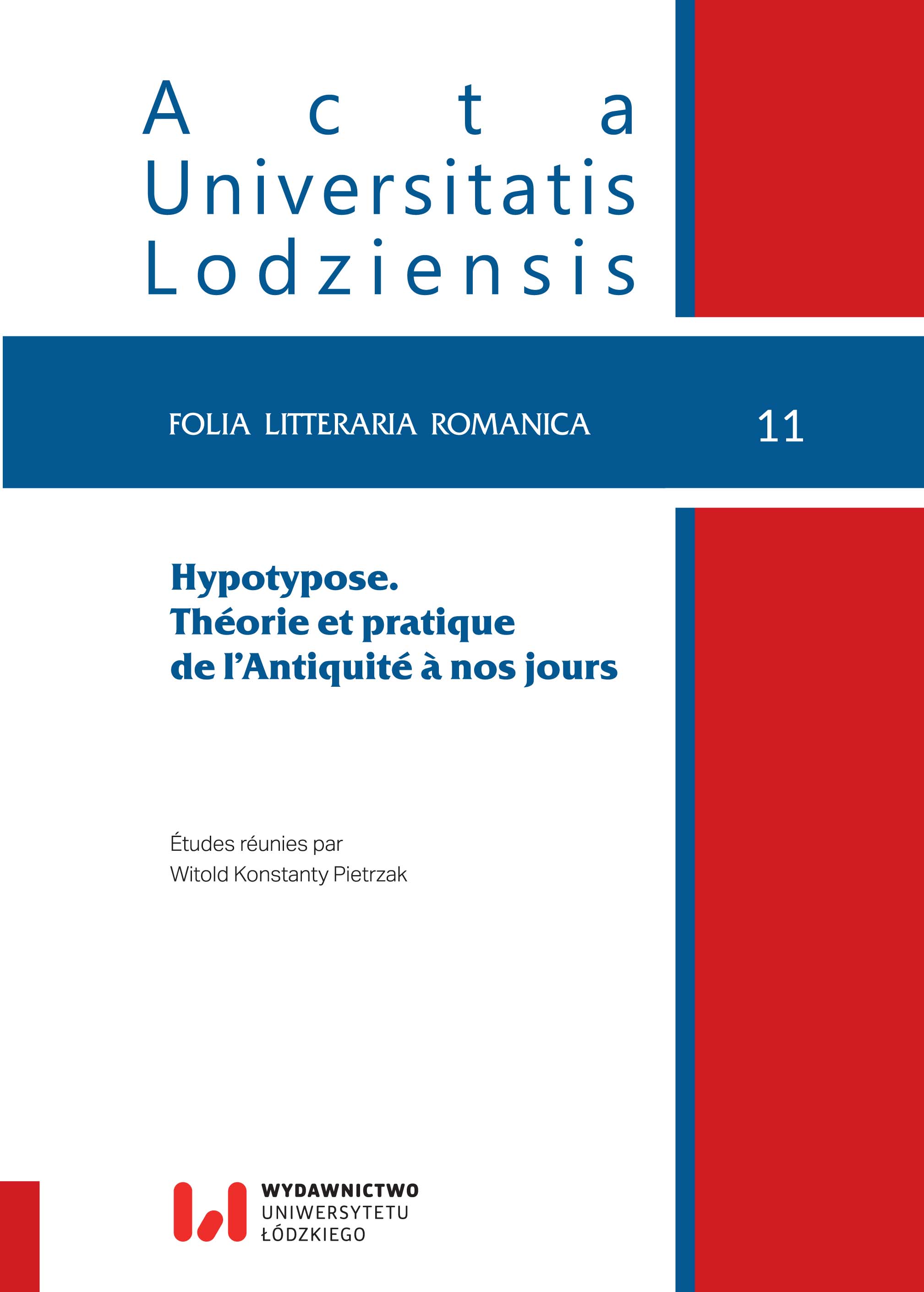Seeing the Audible, Aspiring to the Inaccessible Invisible: Hypotyposis as Adaptation to the Classical Rules in 17th Century French Hagiographic Dramaturgy
DOI:
https://doi.org/10.18778/1505-9065.11.12Keywords:
hypotyposis, hagiographic theater, 17th century, French literature, martyrdomAbstract
During the 17th century, the establishment of neo-Aristotelian rules imposed restrictions on French dramatic art. At the same time, dramatists created a number of hagiographic plays, seemingly incompatible with the purified classical stage. How could one limit the multivalent life of their protagonists to twenty-four hours? How could one perform the focal point of lives of saints, that of their deaths, without transgressing the necessary bienséance and vraisemblance? Hypotyposis complemented the protagonists’ narratives in the hagiographic corpus. Through the description of conversion and martyrdom, the plot could be supplemented and understood by the spectators. Additionally, these vivid descriptions inspired the conversion of secondary characters. This article will address how dramatists used hypotyposis to adapt hagiographic plays to the dramatic restrictions of their time.Downloads
References
Aristote, Poétique, trad. de Michel Magnien, Paris, Librairie Générale Française, 1990
Google Scholar
Aubignac, François Hédelin, abbé d’, La Pucelle d’Orléans, Paris, François Targa, 1642
Google Scholar
Barthes, Roland, « L’effet de réel », Communications, vol. 11, no 1, 1968, p. 84-89
Google Scholar
Chapelain, Jean, « Lettre ou Discours de M. Chapelain à Monsieur Favereau, Conseiller du Roy en sa Cour des Aydes, portant son opinion sur le Poëme d’ADONIS du Chevalier Marin », Préface, in : L’Adone, poema del Cavalier Marino de Giovanni Battista Marino, Paris, Oliviero di Varano, 1623
Google Scholar
Chapelain, Jean, Opuscules critiques, éd. Alfred C. Hunter, Paris, Droz, 1936
Google Scholar
Corneille, Pierre, Polyeucte, martyr, éd. de Claude Bourqui et Simone de Reyff, Paris, Livre de Poche, 2002
Google Scholar
Desfontaines, Nicolas-Marc, Tragédies hagiographiques, éd. de Claude Bourqui et Simone de Reyff, Paris, Société des textes français modernes, 2004
Google Scholar
Fumaroli, Marc, Héros et orateurs. Rhétorique et dramaturgie cornélienne, Genève, Droz, 1996 Horace, Art Poétique, éd. et trad. Léon Herrmann, Revue Latomus, VII, 1951
Google Scholar
Le Bozec, Yves, « L’hypotypose : un essai de définition formelle », L’Information Grammaticale, no 92, 2002, p. 3-7
Google Scholar
(Pseudo-) Longin, Traité du sublime, trad. de Nicolas Boileau, éd. de Francis Goyet, Paris, Librairie Générale Française, 1995
Google Scholar
Morier, Henri, Dictionnaire de poétique et de rhétorique, Paris, PUF, 1961
Google Scholar
O’Brien, Kevin, The Ignatian Adventure: Experiencing the Spiritual Exercises of Saint Ignatius in Daily Life, Chicago, Loyola Press, 2011
Google Scholar
Pasquier, Pierre, La Mimèsis dans l’esthétique théâtrale au XVIIe siècle, Paris, Klincksieck, 1995
Google Scholar
Poussin, Nicolas, Lettres et propos sur l’art, éd. Anthony Blunt, Paris, Hermann, 1964
Google Scholar
Quintilien, Institution oratoire, éd. et trad. de Jean Cousin, Paris, Les Belles Lettres, t. 4, 1977
Google Scholar
Raymond, Marcel, Baroque et renaissance poétique : préalable à l’examen du baroque littéraire français, Paris, José Corti, 1985
Google Scholar
Rhétorique à Herennius, Livre IV, trad. Henri Bornecque, Paris, Garnier, 1932
Google Scholar
Rotrou, Jean, Le Véritable saint Genest, éd. de Emmanuelle Hénin et François Bonfils, Paris, Flammarion, 1999
Google Scholar
Suchet, Dominique, « Pour entendre, voir ce qui est dit (hypothèse d’une double hypotypose) », Revue française de psychanalyse, 2007, vol. 71, no 5, p. 1737-1744
Google Scholar
Downloads
Published
How to Cite
Issue
Section
License

This work is licensed under a Creative Commons Attribution-NonCommercial-NoDerivatives 4.0 International License.












